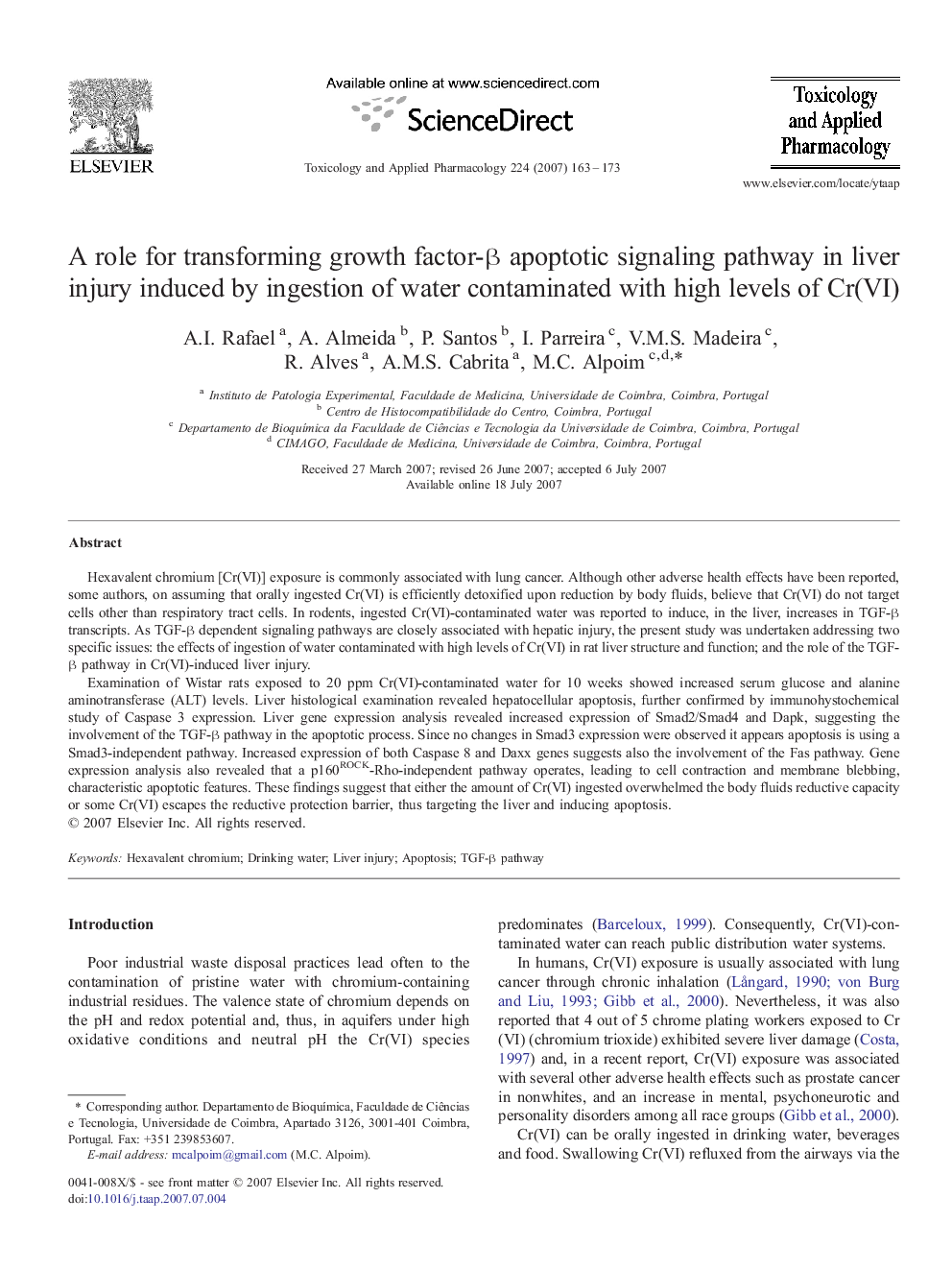| کد مقاله | کد نشریه | سال انتشار | مقاله انگلیسی | نسخه تمام متن |
|---|---|---|---|---|
| 2570647 | 1128595 | 2007 | 11 صفحه PDF | دانلود رایگان |

Hexavalent chromium [Cr(VI)] exposure is commonly associated with lung cancer. Although other adverse health effects have been reported, some authors, on assuming that orally ingested Cr(VI) is efficiently detoxified upon reduction by body fluids, believe that Cr(VI) do not target cells other than respiratory tract cells. In rodents, ingested Cr(VI)-contaminated water was reported to induce, in the liver, increases in TGF-β transcripts. As TGF-β dependent signaling pathways are closely associated with hepatic injury, the present study was undertaken addressing two specific issues: the effects of ingestion of water contaminated with high levels of Cr(VI) in rat liver structure and function; and the role of the TGF-β pathway in Cr(VI)-induced liver injury.Examination of Wistar rats exposed to 20 ppm Cr(VI)-contaminated water for 10 weeks showed increased serum glucose and alanine aminotransferase (ALT) levels. Liver histological examination revealed hepatocellular apoptosis, further confirmed by immunohystochemical study of Caspase 3 expression. Liver gene expression analysis revealed increased expression of Smad2/Smad4 and Dapk, suggesting the involvement of the TGF-β pathway in the apoptotic process. Since no changes in Smad3 expression were observed it appears apoptosis is using a Smad3-independent pathway. Increased expression of both Caspase 8 and Daxx genes suggests also the involvement of the Fas pathway. Gene expression analysis also revealed that a p160ROCK-Rho-independent pathway operates, leading to cell contraction and membrane blebbing, characteristic apoptotic features. These findings suggest that either the amount of Cr(VI) ingested overwhelmed the body fluids reductive capacity or some Cr(VI) escapes the reductive protection barrier, thus targeting the liver and inducing apoptosis.
Journal: Toxicology and Applied Pharmacology - Volume 224, Issue 2, 15 October 2007, Pages 163–173